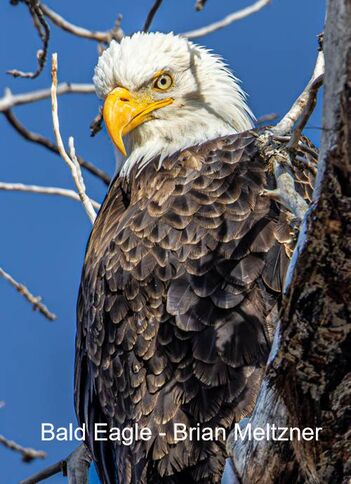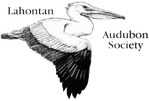|
Excerpt below from The Mystery of the Pinyon Jay: a bird species native to the West has declined dramatically - and we're still trying to figure out why, news article by Alan de Queiroz in the Reno News and Review, February 29, 2024.
Click to read the full story here. In the spring of 2020, I started going for hikes on a part of Peavine Mountain I had hardly ever visited before, just above the Northgate neighborhood in northwest Reno. ... I’ve become attached to the landscape—the shrubby slopes, the scattered outcrops, the pines silhouetted against strange white and orange soils—but mostly, I go there because it’s a great place to find pinyon jays. These birds look like small blue crows and, unlike other jays, usually move around in flocks. I go to follow the jays and, if I’m lucky, to sit in the middle of a flock, experiencing the strange spectacle of these noisy, gregarious birds. “They’re all picking through crevices in the bark for caches (of pine nuts) or probing the ground for caches, and there’s one watching (as a sentry), and they’re rotating through these duties … and it’s really cool to be that close to so many birds,” says Ned Bohman, from the Great Basin Bird Observatory. Every spring, hundreds of birdwatchers drive along predetermined 24.5-mile routes all over the U.S. and in parts of Canada, stopping each half-mile to count every bird they see or hear, making a total of 50 counting points per route. ...The most recent BBS report, covering 1966 through 2022, estimated that the overall number of pinyon jays fell by some 70 percent in that time. ... BBS reports, based on the efforts of thousands of community scientists, were a big part of what put pinyon jays on the radar of conservationists and agency land managers. And, according to John Boone and Ned Bohman (GBBO), community scientists will also be a vital part of the next step in the conservation of this species. “It takes all of us working on this,” said Rose Strickland, the conservation chair for the Lahontan Audubon Society. “Problems are too pervasive; everything is connected, and so we need to be more connected in the way that we approach preserving biodiversity instead of just drawing lines on a map (around protected areas). … It really takes a village.” To learn more about the community science project to map our local Pinyon Jays, please email [email protected]. For the Great Backyard Birdcount in 2024, over the weekend of February 16-19, Lahontan Audubon Society hosted 5 local field trips. Field Trip Leaders kept eBird lists from sites around Washoe County, including Boynton Slough - Dry Creek, Crystal Peak Park, Rancho San Rafael Park, Wingfield Trail, and Swan Lake Nature Study Area. Trips were led by our outstanding Field Trip Volunteer Leaders: Jeff Bleam, Ben Sonnenberg, Steven Cavros, Linda St-Cyr, and Ned Bohman. In total, 68 bird species and 3,696 birds were recorded! California Gulls made the high count at 1,000 at Swan Lake. Wintering Snow Geese and Tundra Swans were also at the lake. One Anna's Hummingbird, the only hummingbird that winters in our area was found at Crystal Peak Park. Also at Crystal Peak Park, a Merlin was spotted, along with 36 Evening Grosbeaks. Purple Finches were continuing at Rancho San Rafael Park, and also noted at Crystal Peak Park. Although normally thought of as passing through during migration, a couple of Lincoln's Sparrows were detected at Boynton Slough and Crystal Peak Park. This bird has been recorded around Reno this winter, though they are not common. The secretive Virginia Rail was heard at Wingfield Trail and also recorded at Swan Lake. Many more birds were seen on all the trips - check out the lists!
 Eagles & Ag (Agriculture) is an event in the Minden area which spans an extended weekend when cows are giving birth to their calves. It gives people an opportunity to visit a normally off-limits private ranch property and photograph (or simply observe) the calves and the raptors or scavengers who come to feed on the afterbirth. On February 10, a couple of LAS volunteers guided a morning group and provided scopes for people to look through. A bus took us around to three private ranches and one historic ranch that's open to the public, the Dangberg Home Ranch Historic Park. One immature Golden Eagle was spotted (they usually stay closer to the mountains), as well as 11 Bald Eagles, with almost a 3-to-1 ratio of immature to mature Bald Eagles. Other notable species from the 22-species morning total included dozens of Red-tailed Hawks, one Ferruginous Hawk, three Cooper's Hawks, two Northern Harriers, an American Kestrel, a Barn Owl, three Great Blue Herons, and dozens of ravens, magpies and blackbirds (with three Yellow-headed among the Red-winged, Brewer's, cowbirds and starlings). While on the bus between ranches, we were entertained by 2 "BS" guides, who had many interesting stories to tell. Watching the young calves take their first steps was pretty amazing. - Report by Linda St-Cyr On Friday, February 2, 2024, Lahontan Audubon Society's Field Trip Leader, Jeff Bleam, led a birdwalk at Oxbow Park along the Truckee River. Managed by the Nevada Department of Wildlife, this park is located along a bend in the river. An oxbow pond and native riparian woodland attracts birds throughout the year. Twenty-one species were seen today and Jeff caught a photo of a Black Phoebe catching an insect on a rock! Photo is in the Macaulay Library (ML614362643).
Hello Photographers, Thank you for your submissions to this month's contest! This might have been the toughest contest yet, as all entries were extraordinary! The board has voted, and the January 2024 Photo of the Month is Brian Meltzer's insatiable Cedar Waxwing! Congratulations, Brian! |
topics
All
Archives
July 2024
|




 RSS Feed
RSS Feed